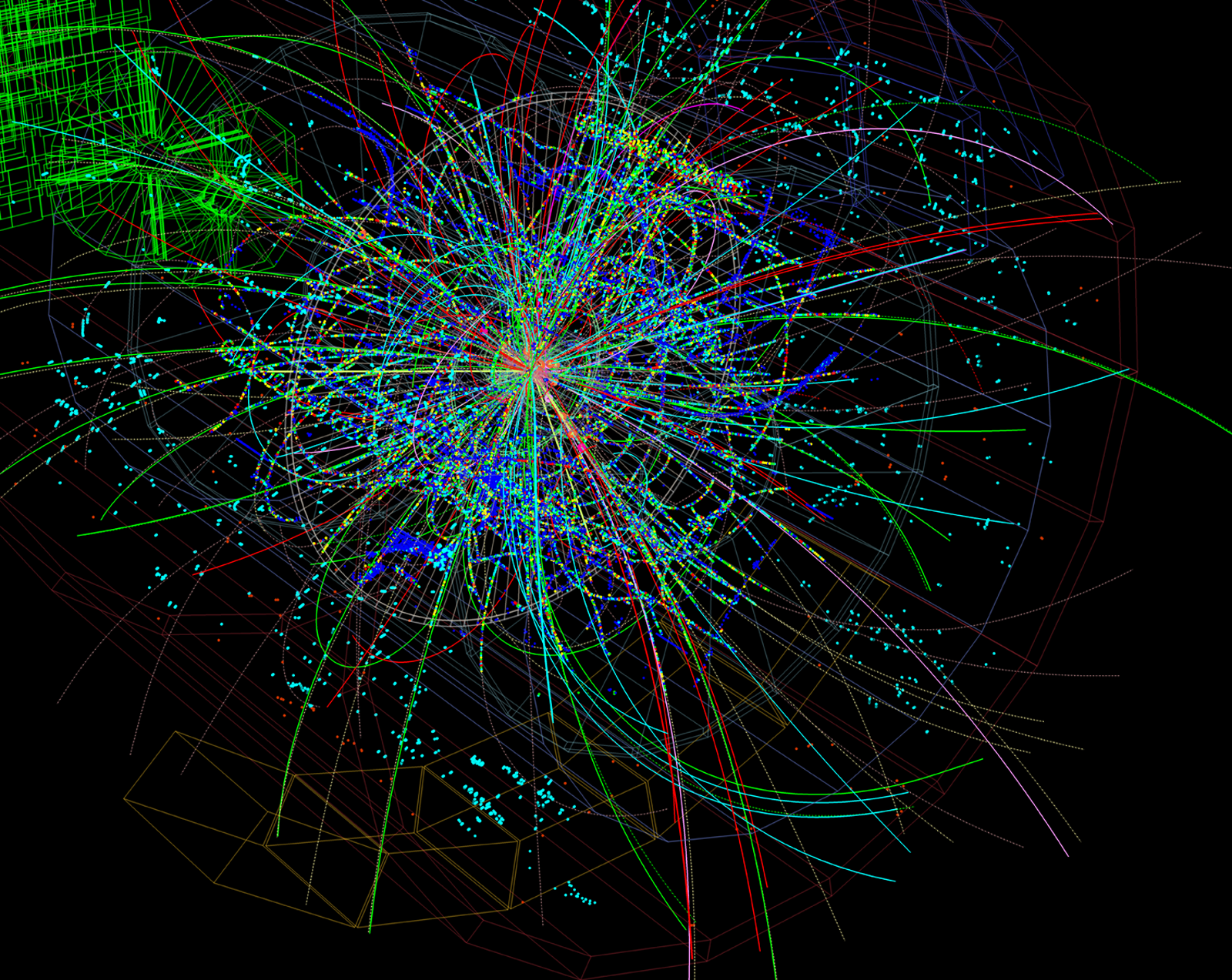Taking a closer look at LHC
The proton source is where it all starts at CERN.
The current proton source is already working in Linac4 after the Long Shutdown 2 (2019-2022. In this case, this new source provides H(-) ions. Its operation is explained in the Linac4 section.
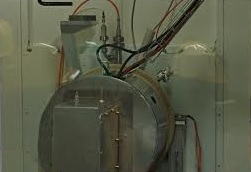
For more precise information on how proton beams are produced during the injection process, see here.
For historical reasons, we explain here what the process was like before Linac4 started operating, when Linac2 was the first accelerator in the accelerator chain ending at the LHC.
"To make the protons", physicists inject hydrogen gas into the metal cylinder -Duoplasmatron- then surround it with an electrical field to break down the gas into its constituent protons and electrons. This process yields about 70 percent protons.
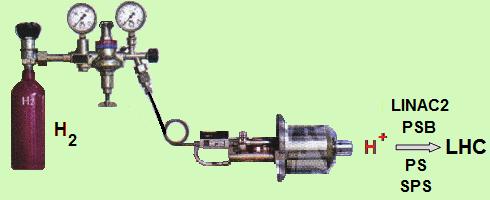
We can simplify the process as follows:
H2 + e- → H2+ + 2e-
H2+ + e- → H+ + H + e-
H + e- → H+ + 2e-
H2 → 2 H+ + 2e-
For the LHC beam, we need:
2808 bunches x 1.15·1011 = 3·1014 protons per beam
or, 6·1014 protons for the two beams (1)
(We are using as protons per bunch the value initially planned for the LHC. With the upgrades and improvements made during successive long shutdowns (LS), this value has been increasing.)
A single cubic centimetre of hydrogen gas at room temperature contains
with P = 105 Pa ,, V = 10-6 m3 ,, T=293 K
using P·V = n·R·T -
n = 4·10-5 moles ,, N = 4·10-5 x 6·1023 = 2.4·1019 molecules
So, about 5·1019 atoms of hydrogen (2)
Taking into account (1) and (2), the LHC can be refilled about 100000 times with just one cubic centimetre of gas – and it only needs refilling twice a day!
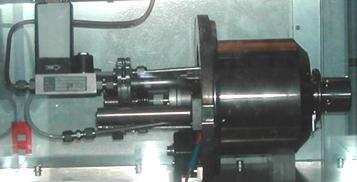
A small commercial hydrogen cylinder contains about 5 kg of gas. So the amount of hydrogen molecules is:
n = 5000/2 = 2500 moles
2500 x 6·1023 = 1.5·1027 molecules
N = 2 x 1.5·1027 = 3·1027 atoms
Taking into account that the process yields about 70% protons we have:
0,7 x 3·1027 = 2.1 ·1027atoms
With (1), this cylinder can be used:
2.1·1027 / 6 ·1014= 3.5·1012 times
Since the LHC is filled every ten hours, this cylinder could be used for:
10 x 3.5·1012 = 3.5·1013 hours
So, about 4 ·109 years
The hydrogen will diffuses out of the bottle faster.
A we said at the top, a new ion source (providing in this case H-) is already working in the new linear accelerator, Linac4.
1.34 x 1020 protons were accelerated in the accelerator complex in 2016. This might sound like a huge number, but in reality it corresponds to a minuscule quantity of matter, roughly equivalent to the number of protons in a grain of sand. In fact, protons are so small that this amount is enough to supply all the experiments. The LHC uses only a tiny portion of these protons, less than 0.1%, as shown in the diagram.
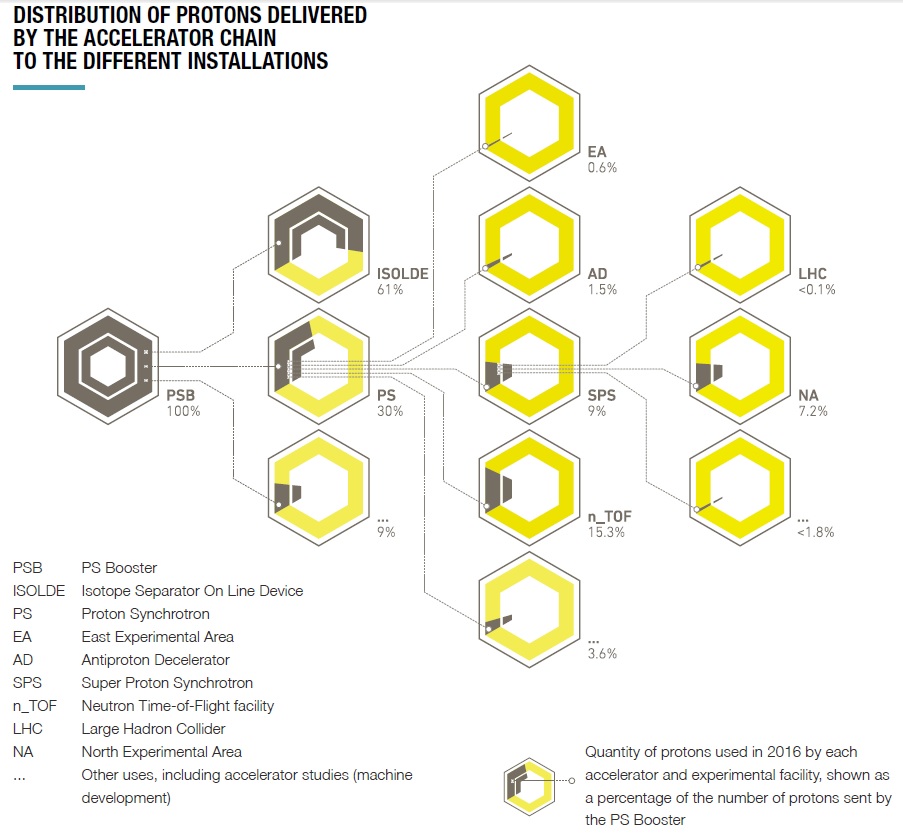
|
AUTHORS Xabier Cid Vidal, PhD in experimental Particle Physics for Santiago University (USC). Research Fellow in experimental Particle Physics at CERN from January 2013 to Decembre 2015. He was until 2022 linked to the Department of Particle Physics of the USC as a "Juan de La Cierva", "Ramon y Cajal" fellow (Spanish Postdoctoral Senior Grants), and Associate Professor. Since 2023 is Senior Lecturer in that Department.(ORCID). Ramon Cid Manzano, until his retirement in 2020 was secondary school Physics Teacher at IES de SAR (Santiago - Spain), and part-time Lecturer (Profesor Asociado) in Faculty of Education at the University of Santiago (Spain). He has a Degree in Physics and a Degree in Chemistry, and he is PhD for Santiago University (USC) (ORCID). |
CERN CERN Experimental Physics Department CERN and the Environment |
LHC |
IMPORTANT NOTICE
For the bibliography used when writing this Section please go to the References Section
© Xabier Cid Vidal & Ramon Cid - rcid@lhc-closer.es | SANTIAGO (SPAIN) |



